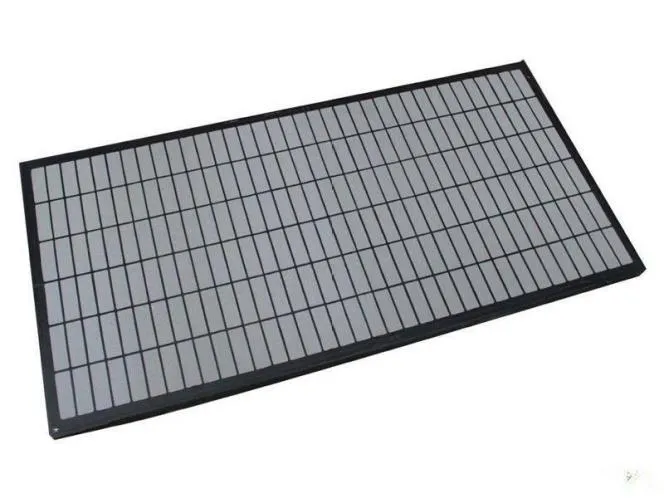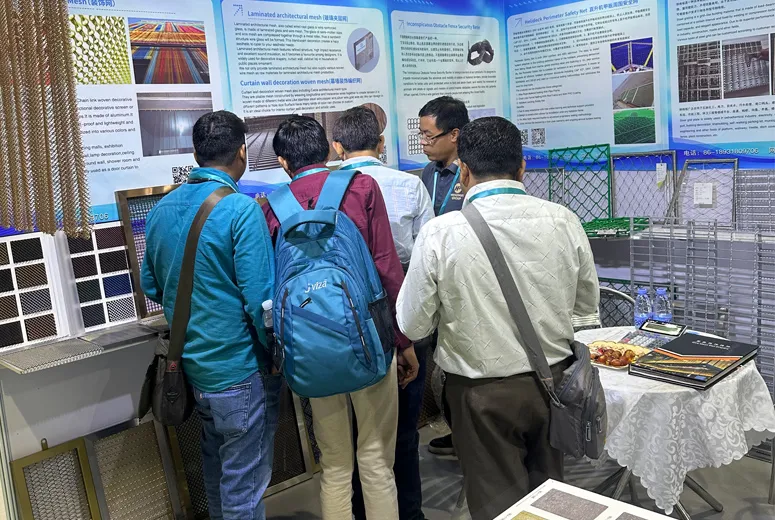- Industrial zone, South of Anping Town, Hengshui, Hebei, China.
- sales@hfpetromesh.com
- +86-18931809706
 Afrikaans
Afrikaans  Albanian
Albanian  Amharic
Amharic  Arabic
Arabic  Armenian
Armenian  Azerbaijani
Azerbaijani  Basque
Basque  Belarusian
Belarusian  Bengali
Bengali  Bosnian
Bosnian  Bulgarian
Bulgarian  Catalan
Catalan  Cebuano
Cebuano  Corsican
Corsican  Croatian
Croatian  Czech
Czech  Danish
Danish  Dutch
Dutch  English
English  Esperanto
Esperanto  Estonian
Estonian  Finnish
Finnish  French
French  Frisian
Frisian  Galician
Galician  Georgian
Georgian  German
German  Greek
Greek  Gujarati
Gujarati  Haitian Creole
Haitian Creole  hausa
hausa  hawaiian
hawaiian  Hebrew
Hebrew  Hindi
Hindi  Miao
Miao  Hungarian
Hungarian  Icelandic
Icelandic  igbo
igbo  Indonesian
Indonesian  irish
irish  Italian
Italian  Japanese
Japanese  Javanese
Javanese  Kannada
Kannada  kazakh
kazakh  Khmer
Khmer  Rwandese
Rwandese  Korean
Korean  Kurdish
Kurdish  Kyrgyz
Kyrgyz  Lao
Lao  Latin
Latin  Latvian
Latvian  Lithuanian
Lithuanian  Luxembourgish
Luxembourgish  Macedonian
Macedonian  Malgashi
Malgashi  Malay
Malay  Malayalam
Malayalam  Maltese
Maltese  Maori
Maori  Marathi
Marathi  Mongolian
Mongolian  Myanmar
Myanmar  Nepali
Nepali  Norwegian
Norwegian  Norwegian
Norwegian  Occitan
Occitan  Pashto
Pashto  Persian
Persian  Polish
Polish  Portuguese
Portuguese  Punjabi
Punjabi  Romanian
Romanian  Russian
Russian  Samoan
Samoan  Scottish Gaelic
Scottish Gaelic  Serbian
Serbian  Sesotho
Sesotho  Shona
Shona  Sindhi
Sindhi  Sinhala
Sinhala  Slovak
Slovak  Slovenian
Slovenian  Somali
Somali  Spanish
Spanish  Sundanese
Sundanese  Swahili
Swahili  Swedish
Swedish  Tagalog
Tagalog  Tajik
Tajik  Tamil
Tamil  Tatar
Tatar  Telugu
Telugu  Thai
Thai  Turkish
Turkish  Turkmen
Turkmen  Ukrainian
Ukrainian  Urdu
Urdu  Uighur
Uighur  Uzbek
Uzbek  Vietnamese
Vietnamese  Welsh
Welsh  Bantu
Bantu  Yiddish
Yiddish  Yoruba
Yoruba  Zulu
Zulu
- Afrikaans
- Albanian
- Amharic
- Arabic
- Armenian
- Azerbaijani
- Basque
- Belarusian
- Bengali
- Bosnian
- Bulgarian
- Catalan
- Cebuano
- Corsican
- Croatian
- Czech
- Danish
- Dutch
- English
- Esperanto
- Estonian
- Finnish
- French
- Frisian
- Galician
- Georgian
- German
- Greek
- Gujarati
- Haitian Creole
- hausa
- hawaiian
- Hebrew
- Hindi
- Miao
- Hungarian
- Icelandic
- igbo
- Indonesian
- irish
- Italian
- Japanese
- Javanese
- Kannada
- kazakh
- Khmer
- Rwandese
- Korean
- Kurdish
- Kyrgyz
- Lao
- Latin
- Latvian
- Lithuanian
- Luxembourgish
- Macedonian
- Malgashi
- Malay
- Malayalam
- Maltese
- Maori
- Marathi
- Mongolian
- Myanmar
- Nepali
- Norwegian
- Norwegian
- Occitan
- Pashto
- Persian
- Polish
- Portuguese
- Punjabi
- Romanian
- Russian
- Samoan
- Scottish Gaelic
- Serbian
- Sesotho
- Shona
- Sindhi
- Sinhala
- Slovak
- Slovenian
- Somali
- Spanish
- Sundanese
- Swahili
- Swedish
- Tagalog
- Tajik
- Tamil
- Tatar
- Telugu
- Thai
- Turkish
- Turkmen
- Ukrainian
- Urdu
- Uighur
- Uzbek
- Vietnamese
- Welsh
- Bantu
- Yiddish
- Yoruba
- Zulu
Stainless & Iron Trench Drain Grates Heavy-Duty & Custom Sizes
- Understanding the foundational role of trench drain grates
- Technical advantages of modern drainage systems
- Critical specifications and load capacity analysis
- Comparative analysis of leading manufacturers
- Material distinctions: Stainless vs. standard steel vs. iron
- Customization possibilities for specialized applications
- Implementation scenarios across industries

(steel trench drain grates)
Why Steel Trench Drain Grates Matter in Modern Infrastructure
Water management represents a critical yet often overlooked aspect of structural engineering. Steel trench drain grates form the visible surface component of drainage systems, bearing direct contact with traffic and environmental elements. Unlike basic alternatives, these metal grating systems provide structural integrity under sustained loading conditions. Municipalities specifying stainless steel trench drain grates
report 65% lower replacement rates compared to polymer alternatives according to civil engineering audits. The fundamental distinction lies in the material's molecular density – crystalline structures in metallic alloys distribute impact forces across multiple load points, preventing localized failures that plague inferior materials. This intrinsic durability becomes particularly vital in high-traffic zones where constant vehicular pressure demands engineered resilience beyond superficial durability claims.
Engineering Superiority in Drainage Technology
Contemporary drainage solutions incorporate hydrodynamic principles that transform simple water capture into precision engineering. Advanced steel trench grates feature computational fluid dynamics (CFD)-optimized aperture patterns increasing flow rates by 40% during peak saturation events compared to standard designs. This technical evolution extends beyond water management to include safety integration: anti-slip textures achieve 0.78 coefficient of friction ratings under wet conditions, exceeding OSHA requirements for pedestrian zones. Leading manufacturers now incorporate corrosion matrix technology where alloy compositions create molecular barriers against chloride ion penetration – a critical advancement extending service life in de-icing chemical environments. These innovations collectively achieve what industry specifications term "maintenance-free durability" with documented 25-year lifespans in airport installations, demonstrating how material science elevates basic infrastructure components.
Load Classifications and Structural Mathematics
Understanding the standardized classification system proves essential for appropriate grate selection. The primary measurements include:
- D400 Standard: Minimum 3,300kg wheel load capacity for pedestrian zones
- E600 Rating: 6,100kg capacity required for standard vehicular traffic
- F900 Certification 9,000kg threshold for industrial forklift operations
Weight distribution physics reveals that actual force on trench drain grates often quadruples the static load during dynamic impact events. Acceleration dynamics calculations show a 2-ton vehicle stopping abruptly generates over 8,400kg of downward force. Consequently, leading European manufacturers implement fatigue cycle testing beyond 2 million load repetitions, simulating decades of service. Third-party verification through organizations like TÜV provides assurance that commercial-grade steel grates withstand these cumulative forces without microfracture propagation. Recent case studies demonstrate D400-rated iron trench drain grates maintained integrity after 15 years in shopping center installations, validating engineering methodologies.
Manufacturer Comparison Matrix
| Manufacturer | Materials Offered | Maximum Load Class | Corrosion Warranty | Customization Options |
|---|---|---|---|---|
| HydroFlow Systems | AISI 304/316 SS | F900 (9,000kg) | 20 years | CAD-modeled solutions |
| DrainPro Engineering | Galvanized/Iron | E600 (6,100kg) | 15 years | Pattern customization |
| MetalDrain Corp | Cast Iron/Duplex | F900 (9,000kg) | 25 years | Full system integration |
Material Selection Science
Optimal material specification depends on environmental chemistry and mechanical requirements. Stainless steel trench drain grates utilizing AISI 316L composition demonstrate exceptional chloride resistance with only 0.0003mm/year corrosion rates in coastal applications. When analyzed through electron microscopy, the chromium oxide layer forms a self-repairing barrier that outperforms epoxy-coated alternatives which show degradation at 0.05mm/year in identical conditions. Conversely, iron trench drain grates remain specified in high-temperature environments where thermal stability prevents deflection – smelting facilities report iron outperforming stainless alternatives by 37% in sustained 500°F ambient conditions. Material choice ultimately reduces to electrochemical environment analysis; for example, Duplex stainless grades provide yield strengths exceeding 550MPa, making them superior in high-vibration environments like bridge expansion joints.
Project-Specific Engineering Solutions
Beyond standardized offerings, specialized manufacturing addresses unique project challenges:
- Architectural Integration: Laser-cut patterns translating building motifs into functional drains
- Anti-Terrorism Security: Blast-rated designs certified to UL 752 Level 3 standards
- Sanitary Environments: Radiused corners and electropolished finishes meeting FDA GMP
- Historic Restoration: Replication of period-specific casting patterns
Thermal deformation calculations inform slot orientation in environments experiencing over 100°F temperature differentials – a necessary engineering consideration preventing seasonal warpage. The most technically advanced steel trench drain grates now incorporate RFID tags embedded within the casting, enabling future infrastructure scanning to identify specifications without invasive excavation. These innovations transform simple drainage components into long-term asset management systems.
Steel Trench Drain Grates Transforming Commercial Applications
Real-world performance metrics substantiate technical specifications. Food processing facilities implementing stainless steel trench drain grates demonstrate measurable operational improvements: 58% reduction in sanitation downtime achieved through sloped designs eliminating moisture pooling. At London's Heathrow Airport, laser-fused steel grates sustained E700 loading (7,500kg) for 14 years before requiring replacement, averaging $0.18/sqft annual maintenance cost. Warehouse operators now specify high-resolution patterned surfaces, increasing tire traction to 0.81μ during wet operations – a safety innovation reducing slip incidents by 32% in logistic centers. Similarly, iron trench drain grates in heritage districts blend structural performance with preservation requirements. These implementations confirm that material specification directly impacts both operational budgets and safety metrics.

(steel trench drain grates)
FAQS on steel trench drain grates
Q: What are the benefits of stainless steel trench drain grates compared to iron ones?
A: Stainless steel trench drain grates offer superior corrosion resistance, making them ideal for harsh environments. They are also lighter than iron grates while maintaining high durability. Additionally, stainless steel requires less maintenance over time.
Q: How do steel trench drain grates handle heavy vehicle traffic?
A: Steel trench drain grates are designed with high load-bearing capacities, often rated for vehicular traffic. Their robust construction resists deformation under pressure. Proper installation ensures they meet industry standards like ASTM or BS EN 1433.
Q: Are iron trench drain grates prone to rusting?
A: Iron trench drain grates can rust if not properly coated or maintained. Galvanization or epoxy coatings are often applied to enhance rust resistance. Regular inspections and touch-ups help prolong their lifespan in wet conditions.
Q: Can stainless steel trench drain grates be customized for specific projects?
A: Yes, stainless steel trench drain grates can be tailored in size, slot width, and finish. Custom designs accommodate unique drainage needs or aesthetic preferences. Manufacturers often provide CAD drawings for precise specifications.
Q: What maintenance is required for steel trench drain grates?
A: Routine cleaning with water and mild detergent prevents debris buildup. Inspect for damage or corrosion annually, especially in joints. For stainless steel, occasional polishing maintains its appearance and corrosion resistance.
-
The Role of Shale Shaker ScreensNewsJun.11,2025
-
Steel Grating Remains a Superior ChoiceNewsJun.11,2025
-
Does Safety Net Mean in the Modern Construction WorldNewsJun.11,2025
-
Concrete Weight Coating in Offshore Pipeline StabilityNewsJun.11,2025
-
Choosing the Right Steel Grating CompanyNewsJun.11,2025
-
Best Shale Shaker Screen for SaleNewsJun.11,2025